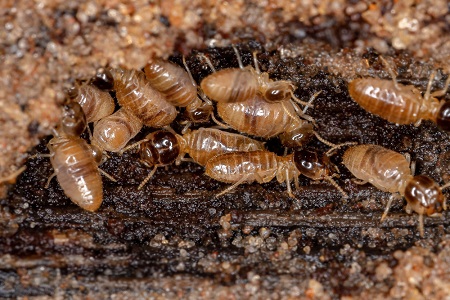What Is Non-Fumigation Termite Control and How Does It Work?
 Are you feeling apprehensive about fumigation termite control? If your answer is in the affirmative, then there are a few non-fumigation termite control treatments to consider. While fumigation is an efficient way of getting rid of termites, there are a few practical difficulties associated with it like the home being unavailable for a few days and the use of toxic chemicals. If you are hesitating over fumigation termite control, this blog is for you.
Are you feeling apprehensive about fumigation termite control? If your answer is in the affirmative, then there are a few non-fumigation termite control treatments to consider. While fumigation is an efficient way of getting rid of termites, there are a few practical difficulties associated with it like the home being unavailable for a few days and the use of toxic chemicals. If you are hesitating over fumigation termite control, this blog is for you.
Why Choose Non-Fumigation Treatments over Fumigation Treatments?
Choosing the right treatment for a particular termite infestation requires an evaluation by expert professionals. But it is important to obtain the consent of the residents before deciding on the particular treatment.
Fumigation treatment is often recommended when the termite infestation is severe and widespread. It might be quite hard to locate all the places of termite infestation to get rid of the termites. Fumigation provides a one-time solution since the gas used permeates even small cracks and crevices to deliver the best results. But most people have some reservations about using toxic gases on their property and thus would prefer non-fumigation termite control methods instead. Here are some advantages of non-fumigation termite control techniques over fumigation techniques.
Advantages of Non-Fumigation Termite Control
- You don’t have to move out of your home during the period of the treatment.
- No possible harm to the plants and pets.
- You don’t have to trim trees and shrubs specially for the treatment.
- You don’t have to remove food items before the treatment.
- You don’t have to remove cosmetics and medication from the house.
- No damage to landscaping and roof.
- You don’t have to disconnect satellite dishes and antennas.
When to Choose Non-Fumigation Termite Treatment over Fumigation?
When a termite infestation is discovered early, you can easily choose non-fumigation termite control methods over fumigation. Also, if the termite infestation is localized to a single area, then non-fumigation termite control is an efficient choice.
If you cannot afford to move out of the house for a few days when the fumigation treatment is to be done, it would be best to consider non-fumigation methods. Also, organic components are used in non-fumigation termite control which makes it environmentally friendly.
What Are the Common Non-Fumigation Termite Control Methods?
There are several options to consider if you are opting for non-fumigation termite control. Depending on the type of infestation and the severity of it, you can choose the most efficient one.
Termite Baiting System
This involves the installation of termite baits around the property. These baits consist of cellulose infused with termiticides. The termites eventually come in contact with these baits since cellulose is their favorite food of choice.
The termites get infected with the termiticide present in the baits but they do not immediately die like in liquid termite treatments. They return to their colonies and infect other termites. This infection eventually reaches the queen after which the whole colony is eradicated.
Direct Wood Treatment
This is the simplest non-fumigation method of termite control. If a wooden surface or furniture is infested with termites,it is treated using surface sprays or alternatively, the termiticides are injected into the space. Borate wood treatments are used to prevent future termite infestations and they also get rid of the existing infestation.
Another option would be to remove the infested furniture from the house. This gets rid of the termites along with the furniture. But this method would only work if the infested space is removable. If the floors and foundations are infested, this method cannot be applied.
Liquid Treatment
This is the most common method used in termite control, especially for properties infested with subterranean termites.
A trench is dug around the foundation of the house and the soil is treated with termiticides. These are insecticides that can kill the termites when in contact. After refilling the trench, it acts as a barrier that prevents termites from entering the house in the future. It also kills termites that try to leave the house.
Efficient liquid termite treatments can protect the house for 8 to 12 years after which the termiticide is to be reapplied. This treatment is mostly done during the preconstruction and postconstruction stages.
Heat Treatments
This treatment is effective with drywood termite infestations. The house is covered with a tent and the air within is heated. Drywood termites cannot survive over a temperature of140 degrees Fahrenheit.
Microwave Technology
Microwave termite control is a safe and eco-friendly procedure that can be performed without the residents clearing the space. The microwave unit used for this method converts microwaves into heat. This is targeted at the areas of termite infestation. The heat kills the termites thus offering you an easy option.
Hi Tech Termite
Fumigation termite control is the last resort when the termite infestation goes beyond control. If the infestation is in the early stages, choose eco-friendly non-fumigation termite control methods.
- Aug 27, 2022
